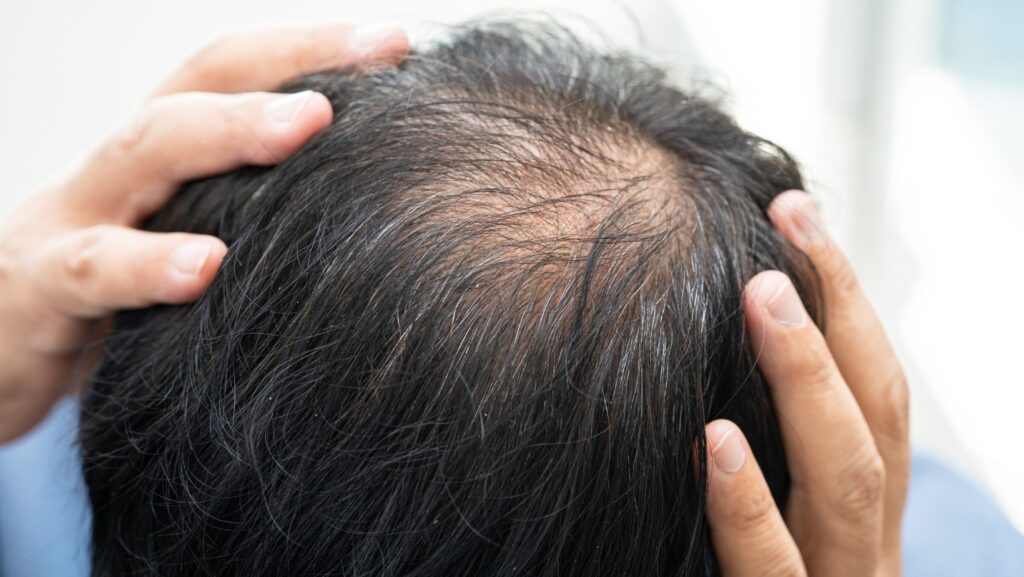Hair is often seen as a crown of glory, but for many, changes in hairlines can spark concern and confusion. If you’ve noticed your hairline shifting over time, you’re not alone! The distinction between a mature hairline and a receding one can be subtle yet significant, and knowing the difference is crucial for addressing any worries you might have about your locks.
In this blog post, we’ll dive deep into the signs that differentiate these two types of hairlines, explore their underlying causes, and uncover effective remedies to help you maintain healthy hair as you age gracefully. Whether you’re looking to embrace your new look or seeking solutions to combat thinning strands, we’ve got insights that will empower you on your journey toward understanding your mane! Let’s unravel the mystery behind those changing edges together!
What is a Mature Hairline?
A mature hairline, also known as a “natural” or “adult” hairline, is a normal change that occurs in most individuals as they age. It’s the gradual recession of the hairline from its original position on the forehead, usually starting from the temples and moving slightly backward. This process typically begins in the late teens or early twenties and continues throughout one’s life. A mature hairline is considered a natural part of the hair growth cycle, and it’s often not a cause for concern.
What is a Receding Hairline?
A receding hairline, on the other hand, is a more pronounced and noticeable change in the hairline that occurs due to hair loss. It’s characterized by a significant recession of the hairline, often creating a distinct “M” or “U” shape on the forehead. Unlike a mature hairline, a receding hairline is not a normal part of the aging process and can be a sign of underlying health issues or genetic predisposition.
How to Tell the Difference Between the Two?
While the distinction between a mature hairline vs receding hairline can be difficult to determine, there are a few key signs that can help you identify which type of hairline you have. Here are some things to look out for:
- Age: A mature hairline typically starts to develop in the late teens or early twenties, while a receding hairline can occur at any age.
- Pattern: A mature hairline usually starts with a slight recession at the temples, while a receding hairline often creates a more pronounced “M” or “U” shape on the forehead.
- Rate of Change: A mature hairline progresses gradually over time, while a receding hairline can occur suddenly and rapidly.
- Hair Density: A mature hairline may cause some thinning of the hair at the temples, but the overall density of the hair remains the same. A receding hairline, on the other hand, can cause significant thinning and balding in the affected area.
- Family History: A receding hairline is often hereditary, while a mature hairline is a normal part of the aging process and may run in families as well.
- Other Symptoms: A receding hairline may be accompanied by other symptoms such as itching, flaking, or redness on the scalp, while a mature hairline usually does not cause any discomfort or irritation.
What Causes a Mature Hairline?
A mature hairline is a natural part of the aging process and is primarily caused by hormonal changes in the body. As we age, our bodies produce less of the hormone dihydrotestosterone (DHT), which is responsible for stimulating hair growth.

This decrease in DHT production can cause the hair follicles to shrink, resulting in a gradual recession of the hairline. Other factors that can contribute to a mature hairline include genetics, lifestyle choices, and environmental factors.
Can a Mature Hairline be Reversed?
Unfortunately, there is no way to reverse a mature hairline. However, there are ways to slow down the process and maintain the health and appearance of your hairline. Here are a few tips:
- Eat a Healthy Diet: A well-balanced diet rich in vitamins, minerals, and protein can help nourish your hair follicles and promote healthy hair growth.
- Reduce Stress: Chronic stress can contribute to hair loss and a receding hairline. Finding ways to manage stress, such as exercise, meditation, or therapy, can help maintain the health of your hair.
- Avoid Harsh Hair Products: Avoid using harsh chemicals or heat styling tools on your hair, as they can damage the hair follicles and contribute to hair loss.
- Consider Medications: Some medications, such as finasteride or minoxidil, may help slow down the progression of a receding hairline. However, they should only be used under the guidance of a medical professional.
- Consult a Doctor: If you are concerned about your hairline or experiencing other symptoms, it’s important to consult a doctor. They can help determine the cause of your hairline and provide personalized treatment options.
Conclusion
A mature hairline is a natural part of the aging process, while a receding hairline can be a sign of hair loss. While it may be difficult to distinguish between the two, understanding the differences and taking steps to maintain the health of your hair can help slow down the progression of a receding hairline. If you have concerns about your hairline, consult a doctor for personalized advice and treatment options.
